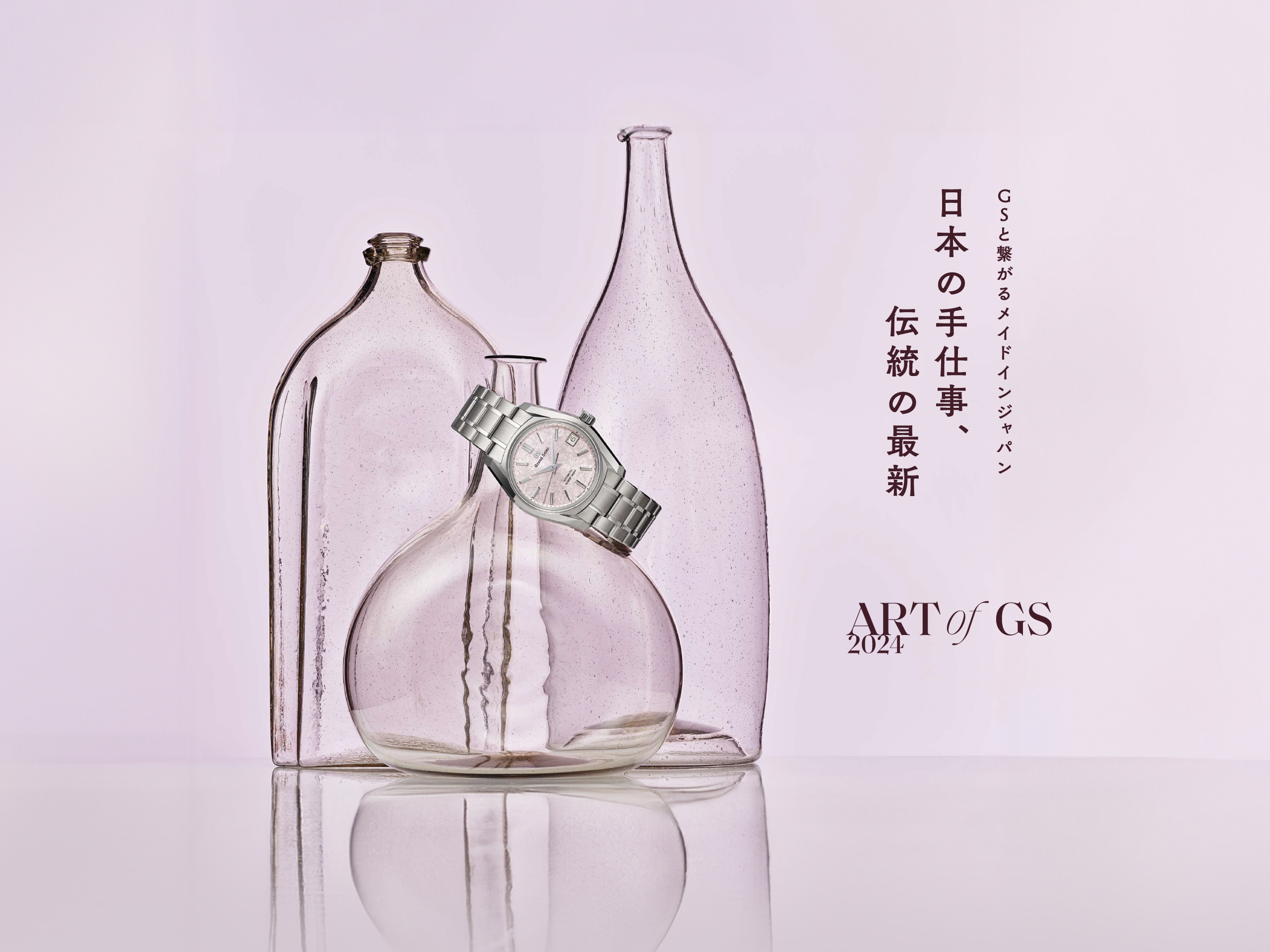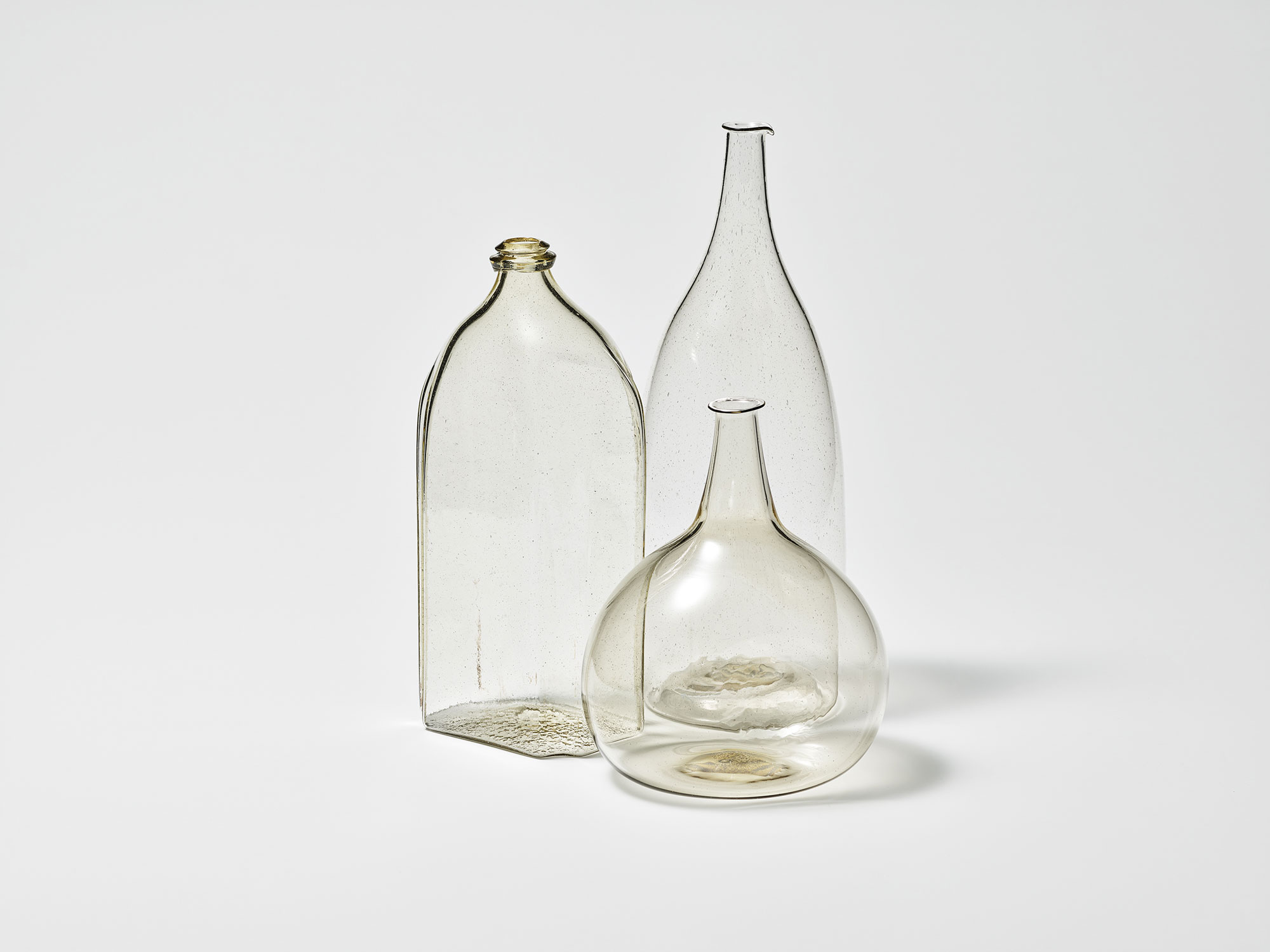
There is an artist who creates glass works in such a thin and delicate way that they resemble the traditional Japanese glass works of the Edo period (1603–1868). Masao Kozumi is a glass artist born in Kumamoto Prefecture who now has a furnace in Gifu Prefecture and is well known among those familiar with Japanese crafts and antiques. The pieces in the image were created using a technique called “air-blowing,” in which hot molten glass is wound around a blowpipe and blown up in the air like a soap bubble. They have characteristic subtle curves that are difficult to craft using molds. The organic texture, which is naturally made, is delicate as it is. Like the dial of SBGH341, inspired by “Sakura-kakushi (hidden cherry blossoms),” it is expresses the beauty of ephemerality.

Sakura-kakushi is a scene in which snow covers cherry blossoms during their full bloom. It is a rare sight in a brief moment at the beginning of spring in the Tohoku region, where Grand Seiko Studio Shizukuishi, the birthplace of the brands’ mechanical watches, is located. The SBGH341 combines a dial that perfectly captures this ephemeral beauty with a case design that is a modern reinterpretation of the iconic 62GS. The smaller diameter of 38mm for the case matches the current trend, which will remain a timeless size in the future. The case and bracelet are made of high-intensity titanium, which is more resistant to scratches than regular titanium and, due to its lightness, sits comfortably on the wrist.
Photography = Naohiro Tsukada
Text = Natsuki Ando